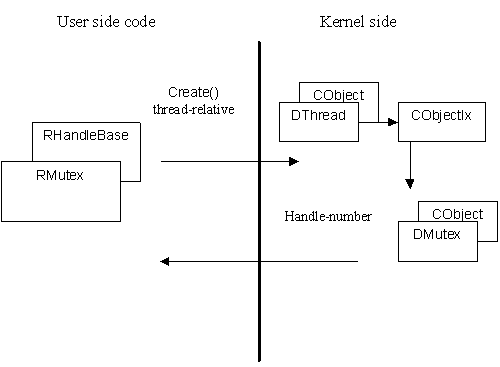Handle-numbers
This document describes the use of handle-numbers to identify handles.
A handle is a way in which a thread or process can identify an object that is owned or managed by another thread or process. Such objects are Kernel side objects.
A handle uses a number, the handle-number, to identify the associated Kernel side object. The handle, an instance of a RHandleBase derived class, encapsulates the handle-number.
The objects referred to by handles are always instances of CObject derived classes, i.e. they are reference counting objects. The handle-number is created when the object is created (or opened, if the object already exists) and added to an object index.
Typically, calling Open() or Create() or a similarly named function on an RHandleBase derived class causes the associated object to be created or opened and added to an object index, owned either by the thread or the process. Adding the object to the object index creates a handle-number and this is returned to, and encapsulated by, the handle.
For example, RMutex is the handle for a mutex; all user side interaction with a specific mutex is directed through an instance of RMutex . The RMutex object exists on the user side; the corresponding mutex (a DMutex object) exists on the Kernel side.
Here, code running on the user side constructs an RMutex and calls its Create() member function. This causes the Kernel to:
-
construct the corresponding Kernel object, a DMutex
-
add the DMutex to the current thread's object index (a CObjectIx )
-
return the handle-number to the RMutex.
...
RMutex m;
m.Create();
...
See also:
Copyright ©2010 Nokia Corporation and/or its subsidiary(-ies).
All rights
reserved. Unless otherwise stated, these materials are provided under the terms of the Eclipse Public License
v1.0.
